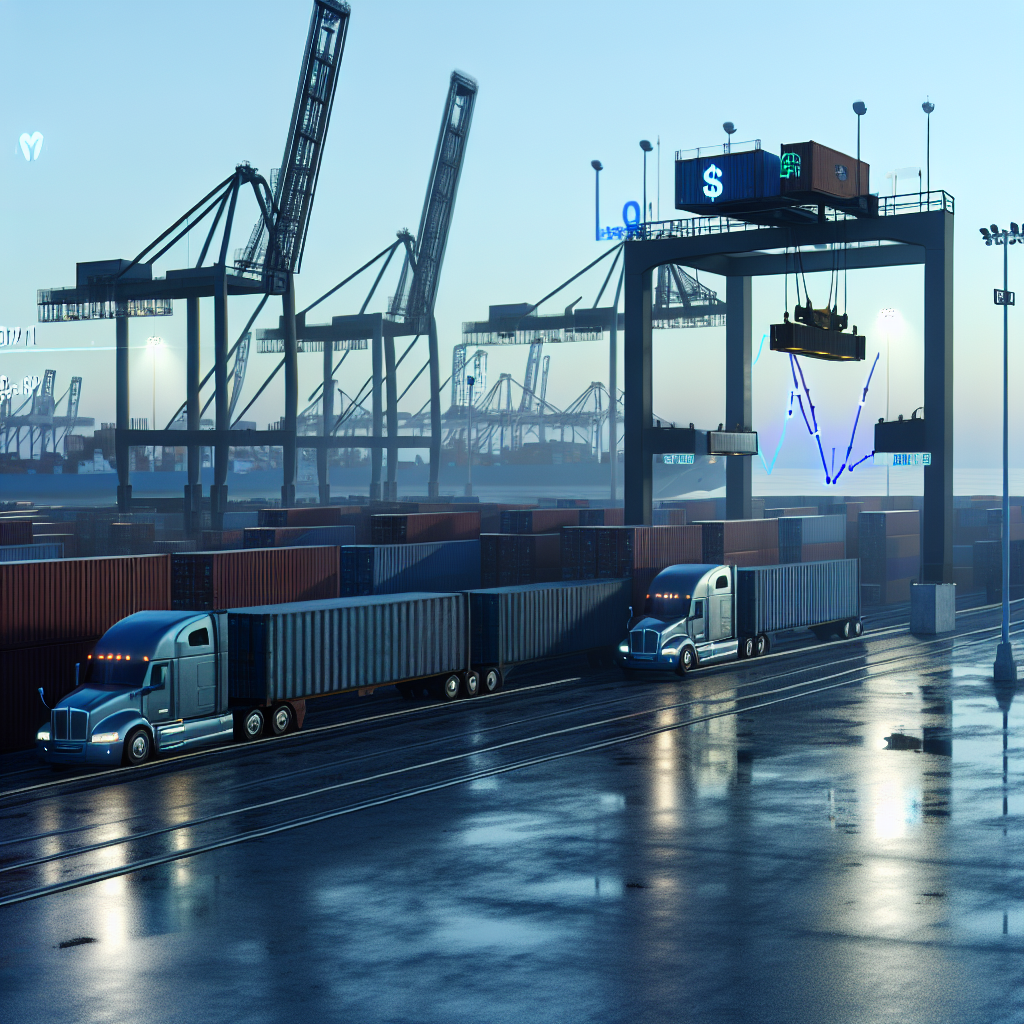Port and rail ramp operations are running relatively smoothly, but import demand has thinned enough that trucking — especially drayage and inland intermodal — is set to feel the downstream pressure in the weeks ahead. That’s the core takeaway from the latest industry readout, which flags softer ocean-driven flows, tighter enforcement of accessorials, and regulatory crosswinds that could erode low-cost capacity and squeeze margins for truckers through year-end.
One big near-term swing factor lands this week: starting Monday, October 14, the United States begins phasing in new port fees on vessels that are Chinese-built or owned/operated by Chinese companies — part of a broader maritime policy package the administration adjusted on October 11. The revised plan sets lower initial charges than first proposed, carves out some exemptions, and staggers the increases over several years; it also layers in steep tariffs on certain Chinese-made ship-to-shore cranes and some truck cargo-handling gear, while stopping short of taxing standard intermodal containers. Taken together, the measures aim to counter China’s shipbuilding dominance without paralyzing US terminals. For trucking, the risk is indirect but real: carriers may shuffle port calls and blank more sailings to avoid fees, creating lumpier gate flows and thinner dray volumes in selected markets.
Beijing has already signaled it will meet fees with fees. China announced retaliatory port charges on US-linked vessels effective October 14, mirroring the US structure by charging per net ton per voyage and stepping rates higher annually through 2028. Even though the share of US-built/flagged ships is small, tit-for-tat policies complicate network planning and increase the odds of additional service rotations, which can shift where and when containers land — and how many dray turns and transloads materialize on a given coast.
Ocean carriers and regulators are already moving to operationalize the changes. Customs and Border Protection has warned operators to be prepared to prove fee compliance at arrival, and early carrier messaging suggests some lines will tweak rotations rather than immediately add surcharges. That calculus could change quickly if fee pass-throughs escalate or if routing shifts amplify bunching at specific gateways — conditions that tend to sap dray productivity and knock-on intermodal schedules.
For truckers watching costs as closely as loads, there’s a modest break on one line item: Union Pacific’s weekly intermodal fuel surcharge ticks down to 32.5% for the week of October 13–19 (from 33% the prior week). It’s a small change, but in a soft pricing environment every basis point matters — particularly for ramp dray and long-haul IMDL where all-in margins are thin.
What this means on the ground for carriers:
– Expect patchier port demand and more “quiet” shifts at some terminals if blanked trans-Pacific strings and port-fee avoidance reduce arrivals; build more flexible labor and power plans around gate hours and cutoffs.
– Tighten documentation and dispute workflows around detention, demurrage and chassis flip fees. With fewer boxes to move, terminals and carriers are policing accessorials more aggressively — and clean timestamp trails are your best defense.
– If you run IMDL, keep a closer eye on inland ramp dwell, chassis pool rules and flip policies; small procedural misses can flip a profitable move negative when volumes are light.
– On tariffs/fees, monitor advisories lane-by-lane. If vessel strings re-route, inland rail flows can swing quickly — shifting spot availability in Chicago, Dallas-Fort Worth, Memphis, Kansas City and the I‑5/I‑10 corridors within a week.
The bottom line for a trucking audience: softer port and rail inputs mean competition for each container and transload tightens, even as policy risk — not congestion — becomes the main swing factor in Q4. If the new fees trigger wider service changes, expect the impact to show up first in dray turn counts and appointment availability, then in inland IMDL volume and finally in broader truckload spillover. Those who pre-wire SOPs for accessorial disputes, keep a tight handle on chassis and ramp rules, and stay nimble on lane mix will be best positioned to defend margins until volumes stabilize.
Sources: FreightWaves, Reuters, Associated Press, Freightos, Union Pacific
This article was prepared exclusively for TruckStopInsider.com. Republishing is permitted only with proper credit and a link back to the original source.





